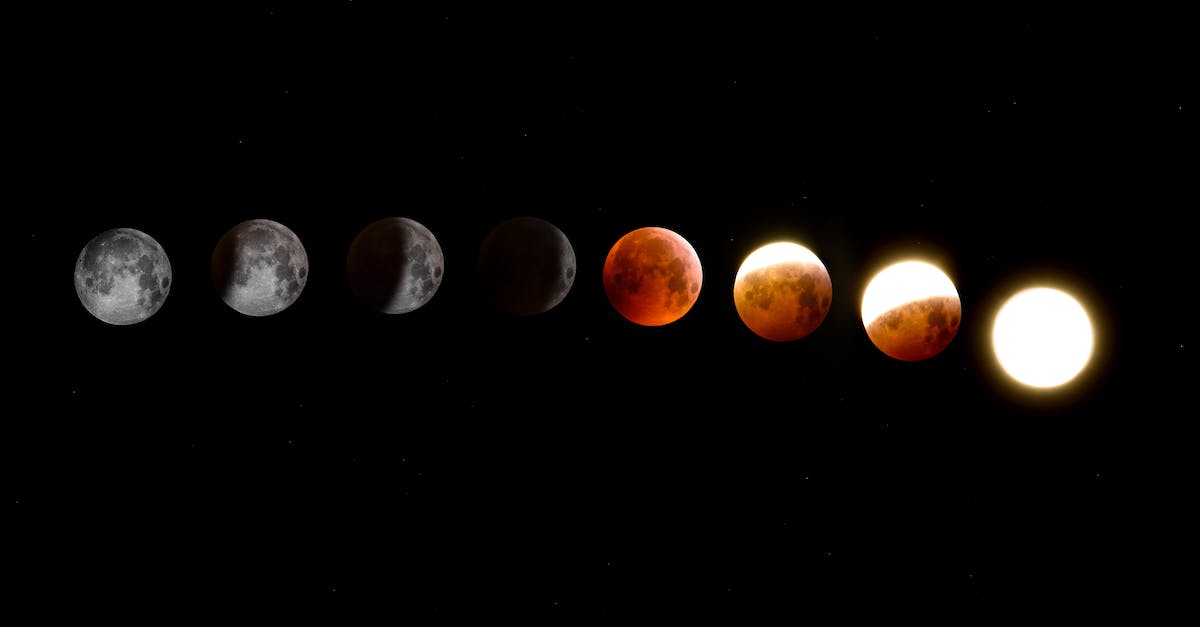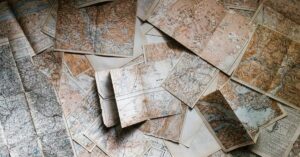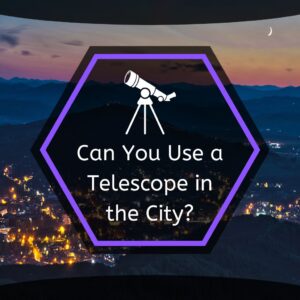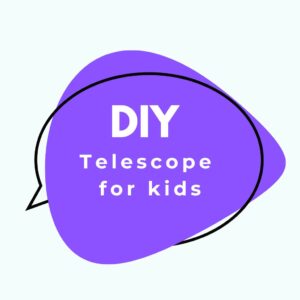This site contains affiliate links to products. I may receive a commission for purchases made through these links.
Ever gazed up at the night sky and wondered why the moon changes shape? It’s all about the moon phases, a fascinating celestial show that’s been going on since time immemorial. I’ll take you on a journey to understand these lunar phases and how they work.
What are Moon Phases?
Moon phases are simply the different shapes of the moon that we see from our planet. These shapes differ due to the moon’s orbit around the earth and how much sunlight it reflects back to us. They’re a wonderful natural spectacle and also play an invaluable role in many of earth’s processes. Even our calendars derive from the lunar cycle, and countless cultures have moon-related myths and legends.
There are eight major phases, starting with the New Moon. This phase is when the moon is between the Earth and the Sun and it’s not visible from earth. As days pass, the moon moves around the earth and we start seeing a tiny sliver of it. This phase is known as the Waxing Crescent.
The next phase is the First Quarter, or half moon, where the moon is at a 90 degrees angle with respect to the earth and the sun, and half of it is illuminated. Then we see a Waxing Gibbous, where more than half of the moon is illuminated but it’s still not full.
The Full Moon phase is where we see the entire face of the moon illuminated. This phase comes halfway through the lunar cycle, which lasts approximately 29.5 days. The full moon provides a wonderful spectacle and has been the inspiration for countless stories, myths, and poems.
Post the full moon, the illumination starts decreasing, and we see a Waning Gibbous, followed by the Last Quarter or half moon, Waning Crescent, and finally back to the New Moon.
This cycle is known as the lunar month or synodic month, and it’s the basis for the concept of the month in many calendars. Let’s glance at the phases in the table below:
| Phase Name | Description |
|---|---|
| New Moon | Moon is between Earth and Sun. Not visible from Earth |
| Waxing Crescent | Tiny sliver of moon visible |
| First Quarter | Half moon. 90 degrees angle with respect to earth and sun |
| Waxing Gibbous | More than half, but not fully illuminated |
| Full Moon | Entire face of moon visible and illuminated |
| Waning Gibbous | Post full moon, illumination decreases |
| Last Quarter | Another half moon, but it’s in the waning stage |
| Waning Crescent | Tiny sliver of moon visible, before returning to New Moon |
The Lunar Cycle Explained
As we’ve already laid out the stages of moon phases, let’s delve deeper into understanding the lunar cycle itself. It’s a fascinating topic, especially for young minds keen on lunar exploration.
A lunar cycle, also known as a lunation, refers to the complete cycle of the moon phases. This cycle starts from the New Moon, progresses through various stages, and ends with the waning crescent. However, isn’t it amazing that right after the waning crescent, a new moon emerges, and the cycle starts all over again? Kids, this is what we call the beauty of nature’s own recycling system – a never-ending loop of lunar cycles!
You may wonder, how long does this lunar cycle last? It lasts approximately 29.5 days. This period of almost a month is the time it takes for the moon to orbit around the Earth and return to its New Moon position. Why 29.5 days, you ask? I’m glad you’re curious! Remember, the moon’s journey around the Earth is not a perfect circle but an oval-shaped path. This elliptical path adds some extra time before the moon gets back to its starting point.
Let’s separate these details out for easy reference:
| Moon Cycle Aspect | Description |
|---|---|
| Cycle Starts | New Moon |
| Cycle Ends | Waning Crescent |
| Duration | Approximately 29.5 days |
| Reason for Duration | The Moon’s elliptical orbit around the Earth |
Different Phases of the Moon
Delving into the different phases of the moon, let’s unpack the major eight. The New Moon kicks it off when the moon’s side reflecting the Sun’s light is facing away from us. At this point, we can’t see it from Earth.
Moving on, we have The Waxing Crescent. Here, the moon starts to move away from the Sun, and a small sliver of it begins to light up.
Next is The First Quarter Moon. Despite its name, it’s not the first phase, but the third. This is when our nocturnal guide is half-lit, resembling a half-eaten cookie.
Then comes The Waxing Gibbous phase. The moon continues to move around the Earth. It’s more than half-lit now but not quite full.
The wondrous sight that is The Full Moon phase is next, where the moon is completely lit and easily visible unless there are clouds covering it.
As the lunar cycle progresses we come to The Waning Gibbous. This is when the moon starts to move back towards the new moon phase, and less of it is lit each night.
The Third Quarter Moon follows with the moon appearing half-lit again but on the opposite side as during its first quarter. It’s like a mirror image of the first quarter.
Finally, we return to The Waning Crescent where just a sliver of the moon is lit up, opposite to the waxing crescent.
Each lunar phase is unique and pulls us towards exploration, reaching beyond the astronomical experience to touch the soul. Every few days, in watching the moon’s dance, we see a different shape, a different phase. It’s a continuous cycle – an eternal round of lunar waltz that doesn’t end with a final bow but instead, circles back to allow us, yet again, to enjoy its heavenly ball.
Moon Observations for Kids
Personally, I believe the moon is one of the most fascinating aspects of our night sky. It’s a celestial masterpiece that changes its appearance every night. And why does it change? Each transformation is the result of the moon’s orbit around earth. For young explorers out there, observing the moon can be a thrilling adventure. Not only does it develop your understanding of natural phenomena, but it’s also an excellent way to introduce basic space science.
The first thing you want to do is schedule your observations. The moon is visible at different times during the day and night, depending on its phase. For instance, you’ll notice the New Moon is not visible at all. During the Full Moon phase, the moon shines brightly all night. It’s a sight you’ll surely appreciate.
Your next step is to use helpful tools for your exploration:
- Moon Phase Calendar: Allows you to track the current phase of the moon. You’ll know the best time to observe specific phases.
- Binoculars or a Telescope: These provide a closer look at the moon’s surface. Craters, mountains, plains—there’s so much to discover!
Lastly, observe the moon’s features. They can tell you so much about the moon’s history and ongoing geologic activity. Study the moon’s surface carefully and you’ll notice it’s not a smooth sphere. It’s covered in visible features called maria (large, dark, basaltic plains), highlands (bright, mountainous areas), and craters (circular pits). The maria are relatively flat with few craters while the highlands are heavily cratered.
So, grab your tools and start your moon exploration. Remember, the moon is the nearest celestial body to earth. That makes it the best object for budding astronomers to study. By observing the moon, we get a glimpse of the vast universe beyond our tiny planet. It’s like looking into a cosmic mirror reflecting the past and present of space exploration. The moon tells a story, listen.
Lunar Exploration for Kids
Now that we’ve delved into the fascinating cycles of moon phases, let’s shift our focus towards lunar exploration. How exciting it is to think about exploring the moon’s surface through the eyes of a child! Ready for an adventure? Great! It’s time to introduce some handy tools and techniques to kickstart this journey.
First things first, binoculars or a telescope can be your best friends when it comes to lunar exploration. They aid in observing the moon up close, highlighting the intriguing features we discussed earlier such as maria, highlands, and craters.
Next up, a moon phase calendar. This magic tool enables young explorers to predict which phase the moon will be in at any given time. It’s like having your very own lunar forecast! By being aware of the moon’s phases, kids can plan the perfect time for observations. This beautiful yet straightforward tool goes beyond just predicting phases. It enables an understanding of the moon’s journey around the Earth and the celestial dance that happens over time.
Taking moon exploration a notch higher, there’s a need for some guidance. How about a hands-on moon map? A map of the moon reveals a microscopic look at its surface, detailing various sites and points of interest. Now we’re talking about a real exploration experience! This interactive tool offers exciting glimpses into the lunar landscape, making it easy for the little ones to navigate and understand what’s on the other side.
Pairing these gears with a hint of curiosity and dedication can surely set the stage for an exciting lunar expedition. We’ve come a long way since the first-time man walked on the moon. Today, with these tools and a passion for learning, every child can indulge in their mini moon mission. Ready to start this fun-filled adventure? It’s time to gaze into the night sky and embark on this incredible journey!
Wait! There’s still more to moon exploration. As we delve deeper, there’s so much to discover together…
Conclusion
So there you have it! We’ve journeyed through the fascinating world of moon phases and lunar exploration, perfect for sparking that astronaut dream in kids. Remember, it’s not just about knowing the different phases of the moon. It’s also about experiencing the thrill of discovery with tools like a moon phase calendar, binoculars, and a telescope. The moon’s maria, highlands, and craters are waiting for young explorers to uncover their secrets. A hands-on moon map can be a great start to this exciting adventure. So let’s inspire our kids to look up, explore, and dream big. After all, today’s young moon gazer might be tomorrow’s astronaut.
Frequently Asked Questions
What does the article discuss about?
The article delves into the topic of moon phases, providing detailed information about the different stages, and promotes the importance and fascination of lunar exploration especially for young learners.
What tools are suggested for moon observation?
The article suggests the use of a moon phase calendar, binoculars, and a telescope for close and detailed observation of the moon’s different phases.
What features of the moon’s surface are highlighted?
The surface features of the moon discussed include the maria, highlands, and craters. These contribute to the moon’s distinct appearance in each phase.
How does the article encourage readers about moon exploration?
The article encourages readers to start their own exploration of the moon. It introduces additional tools like a hands-on moon map to make the experience more interactive and exciting.
What is the overall goal of the article?
The article aims to spark interest and excitement about lunar exploration among children by providing detailed knowledge about the moon, stressing on the unique features of its various phases.




